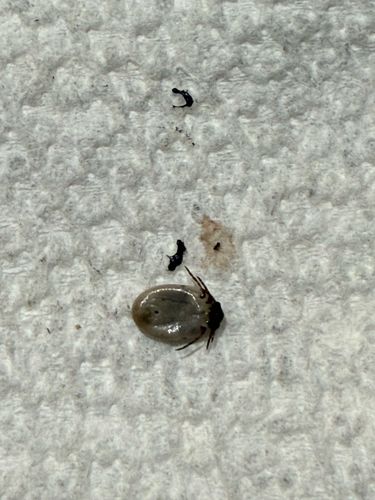Tick
Scientific Name: Ixodidae (hard ticks) or Argasidae (soft ticks)
Order & Family: Order Ixodida, Family Ixodidae (most likely, given the image)
Size: Unfed: 1-5 mm; Engorged: up to 15 mm (depending on species and blood meal)

Natural Habitat
Forests, grasslands, urban parks, tall grass, leaf litter, and areas with dense vegetation. They typically live outdoors but can be brought indoors by hosts.
Diet & Feeding
Blood (hematophagous) of mammals, birds, reptiles, and amphibians.
Behavior Patterns
Ticks are obligate parasites and require a blood meal at each life stage (larva, nymph, adult). They employ 'questing' behavior by climbing vegetation and waiting for a host to pass by. Once on a host, they typically crawl to a preferred feeding site and attach using their mouthparts. Feeding can last from hours to several days.
Risks & Benefits
Potential risks: Ticks are significant vectors of various diseases to humans and animals, including Lyme disease, Rocky Mountain spotted fever, anaplasmosis, ehrlichiosis, babesiosis, and Powassan virus. Tick paralysis is also a rare but serious condition. Benefits: Limited direct ecological benefits are known; primarily considered pests and disease vectors.
Identified on: 11/4/2025